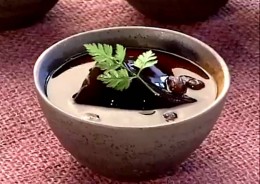Search This Blog
Tuesday 20 September 2016
Monday 19 September 2016
Chocolate Basket
Today I am going to show you that a recipe has no recipe:) only dark chocolate and cocoa powder, all you need is your decoration skill, as simple as everyone can do. The product is mainly used for decoration, but you can stuff candies or sweets inside for party or else.
Scallop and vegetables Terrine
About Terrines.
The terrine is a baked forcemeat, often but not always containing one or more types of garnish. Terrine is baked in an earthenware dish. The dish itself is also called a terrine, a word derived from the French Terre, meaning "earth". Today, other materials besides earthenware, such as glass or metal, may be used for terrines. Terrines may be presented in their baking dish, or they may be unmolded.
Sunday 18 September 2016
Tea leaves smoked chicken
Smoked food
Smoking is the process of flavoring or preserving food by exposing it to smoke from burning woods. Smoking is also an ideal way to deal with some special ingredients that come with heavy odor, such as river fish, which always come with the smell of dirt. By using the smoking method, it could easily remove the unpleasant smell of the ingredient, some more providing a special smoky flavor. Almost every meat and fish could be smoked as long as the size or the ingredients itself is easy to cook, one of the well known smoked items is the smoked Salmon which is always used for the bagel in breakfast menu.
Basic Focaccia
Yeast product
In its simplest form, bread is nothing more than a dough of flour and water, leavened by yeast then baked. In fact, some hard-crusted French bread contains only these ingredients, plus salt. Other kinds of bread contain additional ingredients, such as sugar , oil, milk, eggs, and herbs or spices. However, flour, water, and yeast are still the basic build of all bread.
Yet for something that seems so simple, bread can be one of the most complex products to make. Success in bread-making depends on the understanding of two basic principles: gluten development, and the yeast fermentation.
Steps in yeast dough production.
The production of yeast bread involves in 12 basic steps. These steps are applied to yeast production in general, with variations depending on the particular product, and of course the state of the product.
- Scaling ingredient.
- Mixing.
- Fermentation.
- Punching.
- Scaling.
- Rounding.
- Benching.
- Makeup and panning.
- Proofing.
- Baking.
- Cooling.
- Storing.
As you can see, mixing of ingredients into a dough is only one part of a complex procedure.
Scaling ingredients.
All ingredients must be weighed exactly to the recipe, as the recipe is going to introduce the product.
Mixing.
The first two purpose of mixing is combining the ingredients to form a dough and distribute the yeast, are accomplishes during the first part of mixing, the remaining time is to form a gluten in the dough. overmixed or undermixed doughs have poor volume and texture.
It is necessary to learn to tell by sight and feel when a dough is thoroughly mixed. This can be done only through experience and with the guidance of the instructor. A properly developed dough feels smooth and elastic.
Fermentation.
Fermentation is mean the yeast acts on the sugars and starches in the dough to produce carbon dioxide gas and alcohol. An underfermented dough is called a young dough. An over fermented dough is called an old dough.
Gluten becomes smoother and more elastic during fermentation. An underfermented dough does not develop proper volume, and the texture will be coarse. A dough that ferments too long or at too high temperature becomes sticky, hard to handling and slightly sour.
Punching.
Punching is not really mean to punch the dough hard, but is a method of deflating the dough that expels carbon dioxide, redistributes the yeast for further growth, relax the gluten, and balance the temperature throughout the dough.
Scaling
Dividing the dough into pieces of uniform weight by using a scale, according to the product being made, especially for the roll or bread which are going to stuff into a pan later.
Rounding (especially for bun and rolls)
After scaling, the pieces of dough are shaped into smooth, round balls, this procedure forms a kind of skin by stretching the gluten inside out from the dough to form a smooth layer on the dough. Rounding simplifies later shaping of the dough and also helps retain gasses produced by the yeast.
Benching
Rounded portions of dough are allowed to rest on the bench for 10 to 15 minutes. This relaxes the gluten to make shaping the dough easier, Also fermentation continues during this time.
Makeup and panning.
The dough is shaped into loaves or rolls and placed in pans or on baking sheets. For all loaves and rolls, the seam must be centered on the bottom to avoid splitting during baking.
Proofing.
Proofing is a continuation of the process of yeast fermentation, which increases the volume of the shaped dough. Some product or recipe may skip this steps, but it is best to check the dough whether it is ready for the baking or not. Simply press the dough by the finger tips, poke gently on the puffy dough, if the indentation remains, then the dough is ready to bake, proofing needed if the pressed dough is bouncing back.
Baking.
Loading the dough into the oven, bake time varies to the recipe and product, sizes, lean types or rich dough. Hard crusted bread are baked with steam injected into the oven during the first part of the baking period. This aids the formation of a thin crisp crust. Rye breads also benefit from baking with steam for the first ten minutes.
Although baking times vary considerably, depending on the product. A golden brown crust color is the normal indication of doneness. Loaves that are done sound hollow when thumped.
Cooling.
After baking, bread must be removed from pans immediately and cooled rapidly on racks to allow the escape of excess moisture and alcohol created during fermentation.
Rolls bake apart from each other on sheets may be left on them because they will get adequate air circulation. If soft crusts are desired, bread may be brushed with melted shortening before cooling. Do not cool in a draft, or crusts may crack.
Storing.
Bread to be served within eight hours may be left on racks. For longer storage, wrap cooled bread in cling film to retard staling. Bread must be thoroughly cooled before wrapping, or moisture will collect inside the film.
Focaccia bread recipe.
Focaccia is a flat oven-baked Italian bread product which is similar to pizza dough, topped with herb, olive oil, salt, and other ingredients, sometimes, onion, cheese, or meat, it might also be flavored with a number of vegetables. Focaccia can be used as a side to many meals, as a pizza dough, or as a sandwich bread. Focaccia with rosemary is a common focaccia style in Italian cuisine that may be served as an appetizer, table bread, or a snack.
Focaccia
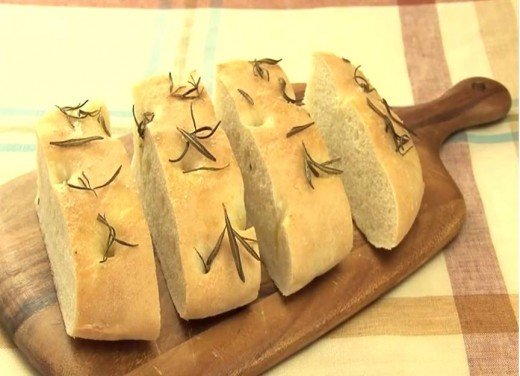
Source
Cook Time
Prep time: 40 min
Cook time: 20 min
Ready in: 1 hour
Yields: six people
Ingredients
- 400 grams Strong flour / Bread Flour
, sieved
- 4 grams Dried Yeast
, For the dough
- 8 grams Salt, For the dough
- 1 cup Warm water (For winter season), For the dough
- 1 teaspoon Honey
, For the dough
- 1 tablespoon Extra Virgin Olive Oil
, For the dough
- As need Extra Virgin Olive Oil
, For panning
- 1 sprig Rosemary, For panning
- As need Salt, For panning
Let's bake
- Mix the Group (A) and (B) ingredients in a bowl, then mix them well in the bowl with a scraper.
- Knead the dough on the table about 10~15 minutes until the gluten is formed, evidently, the dough is smooth and silky. Check the gluten of the dough by gently pulling it to two different way, the gluten is firm when the skin is hardly torn apart.
- Leave the well-kneaded dough back into the bowl and cover with cling film, leaving in the room temperature to ferment for 1 ~ 1 1/2 hour.
- Arrange a piece of baking paper on the baking pan, sit the fermented dough on it and gently press and pull the dough wider. Cover with a cling film and let the dough rest for another 10 minutes.
- dip the olive oil with fingertips, then poke on the dough to make some holes all over the surface of the dough.
- Drizzle with olive oil, scatter with the rosemary leaves and sprinkle some salt.
- Set the focaccia bread into the 200°C preheated oven to bake for 15~20 minutes, remove the bread from the oven when satisfied brown. Remove the bread from the hot pan immediately to avoid rough heat, cool on a rack.
Cooking with picture
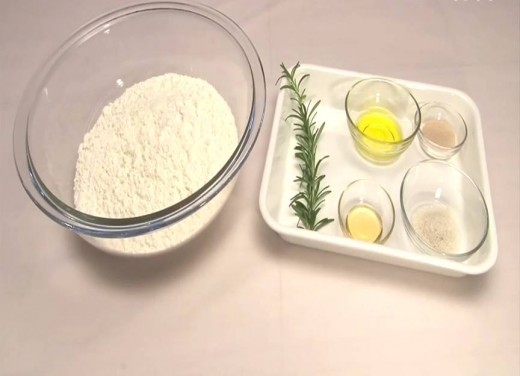
Scaling ingredients | Source
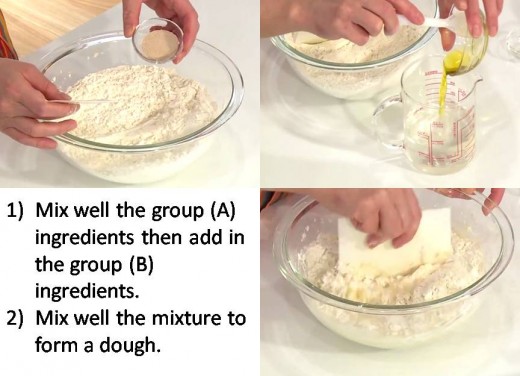
Mixing the dough (first part). | Source
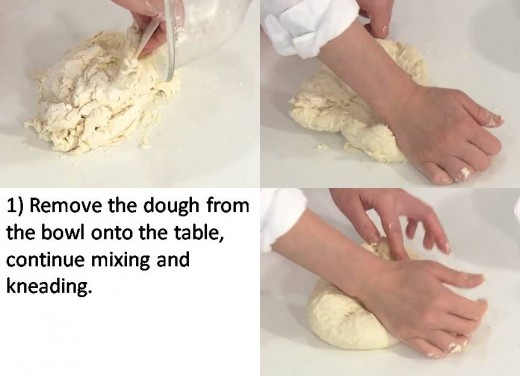
Mixing the dough( Formation of the gluten). | Source
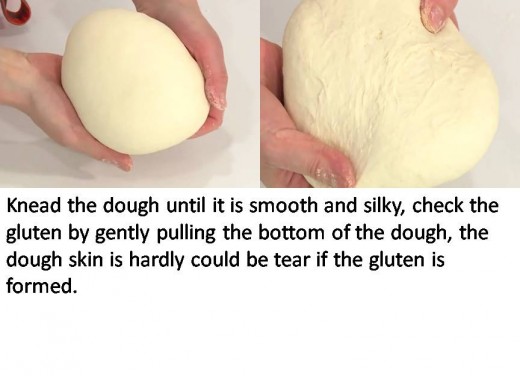
Checking the gluten. | Source
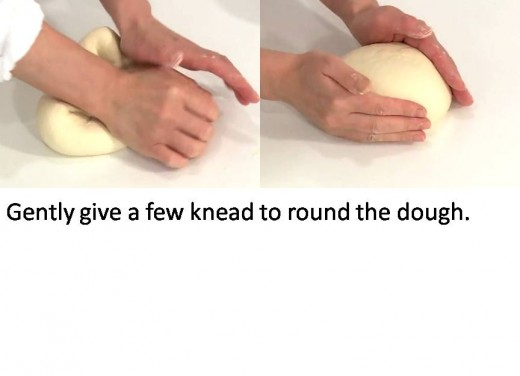
Take a few knead to round the dough. | Source
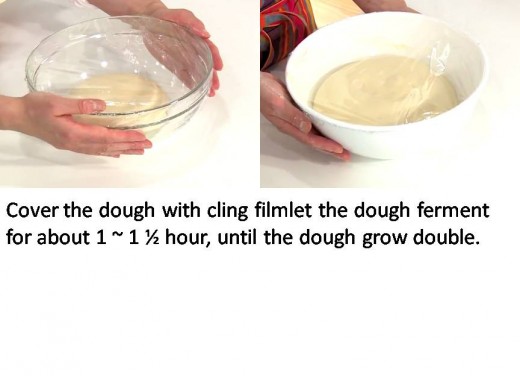
Fermentation. | Source
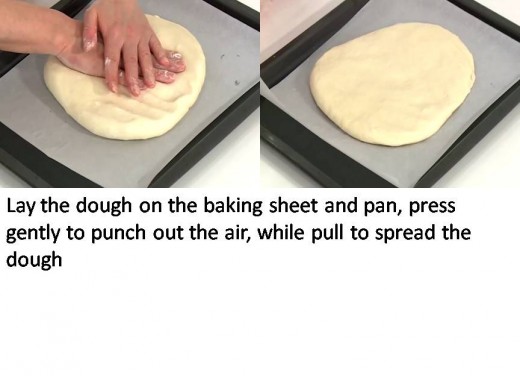
Punching. | Source
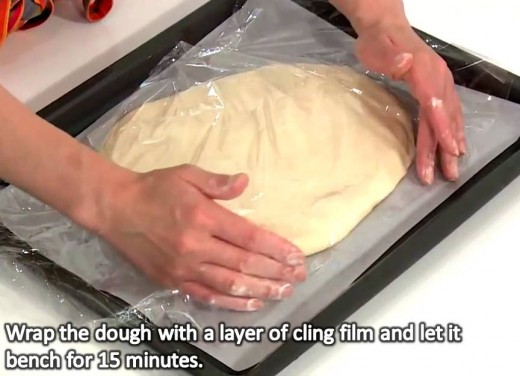
Benching. | Source
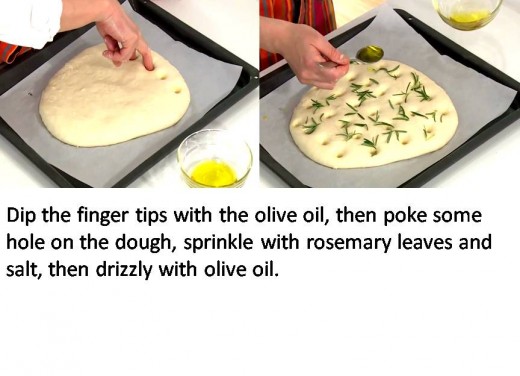
Shaping and Panning. | Source
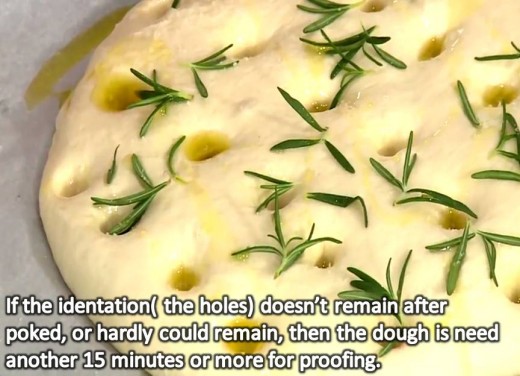
Check if proofing is needed. | Source
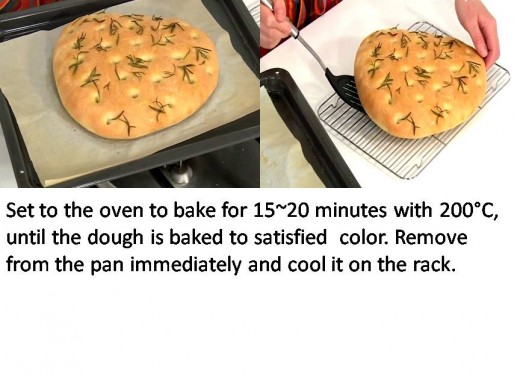
Baking and storing. | Source
Saturday 17 September 2016
Thursday 15 September 2016
Baked Alaska
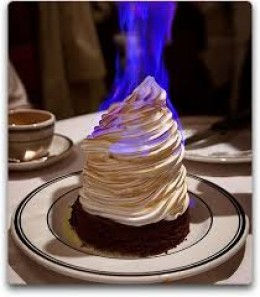 |
| http://wattsupwiththat.com |
About Baked Alaska
Baked Alaska is a common dessert in the Western country while it is something still remain mysterious for most of the Asian, unlike the pudding of Black forest cake is well known in Asia.
is a common dessert in the Western country while it is something still remain mysterious for most of the Asian, unlike the pudding of Black forest cake is well known in Asia.
Wednesday 14 September 2016
Religieus
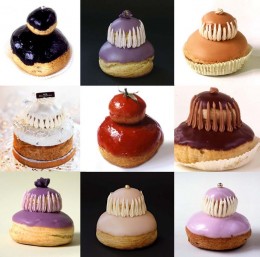 |
| Religieus variety http://www.pinterest.com |
About Religieus
Religieuse ルリジューズ is the common pastry that you can find easily in every cake shop in every Paris street corner.
Chawan Mushi茶碗蒸し
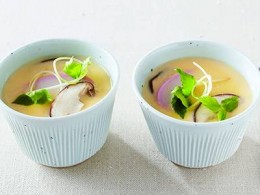 |
| http://www.kyounoryouri.jp |
About Chawan Mushi茶碗蒸し.
Chawan Mushi, or steamed egg custard in English, is one of the traditional dishes in Japan, born in the Nagasaki prefecture at the year of 1689.
Tuesday 13 September 2016
Muscovado Creme Brulee
Muscovado Cream Brulee
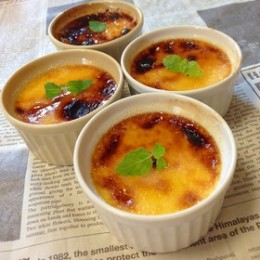 |
| http://cookpad.com/ |
About Cream Brulee
Once again, I know you all have tried these famous and delicious dessert, but I still want to talk about it, consider to help to improve my writing skill. Creme Brulee was known as burnt cream as the "Brulee" means burnt in French, or trinity cream, is a dessert consisting of a rich custard base topped with a contrasting layer of hard caramel and it is normally served at room temperature. The custard base is traditionally flavored with vanilla but can have a variety of other flavorings such as green tea flavor.
was known as burnt cream as the "Brulee" means burnt in French, or trinity cream, is a dessert consisting of a rich custard base topped with a contrasting layer of hard caramel and it is normally served at room temperature. The custard base is traditionally flavored with vanilla but can have a variety of other flavorings such as green tea flavor.
Pudding
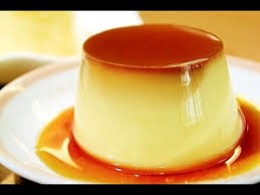
Source
Panna Cotta
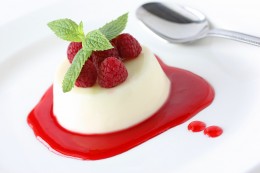
Source
What is the different between the three brothers?
Do you know what is different between the Cream Brulee, the Pudding, and the Panna Cotta? They all look a likes to me, soft and sweet, shaking while you vibrate them. However, the ingredients are the main key which makes them different.
The Creme Brulee consists ofCream base + eggs + sugar, so the cream will always use more cream in the recipe.
consists ofCream base + eggs + sugar, so the cream will always use more cream in the recipe.
The Panna Cotta consists of Cream + Milk + sugar + Gelatin, the Panna Cotta doesn't have the egg so the Gelatin is used for its hardening.
consists of Cream + Milk + sugar + Gelatin, the Panna Cotta doesn't have the egg so the Gelatin is used for its hardening.
I hope this will help :)
Muscovado Cream Brulee
Have you tried any cream Brulee before? Do you like it? Well, I can tell you very very sure that I love it so much. Even though I have worked in kitchen for so many years and yet I don't have any experience in pastry or dessert, but this cream Brulee is simple and easy to make at home, with its simple cooking method and easy ingredient, however, the ingredient at here is a bit hard to find, so maybe you could use something else to substitute like gula Melaka if you are from Malaysia, brown sugar and coffee if you are from another country, these are the best I could think off. As Muscovado sugar is the very pure sugar derived from sugar cane, without any refinement, it is dark and brown with its appearance, and of course, the sweetness is less sweet than the refine sugar, but the flavor of the Muscovado sugar is awesome.
Cook Time
Prep time: 20 min
Cook time: 30 min
Ready in: 50 min
Yields: 6 bowl
Ingredients
- 5 nos Large egg yolk
- 60 grams Muscovado
Sugar, For the Brulee
- 160 ml Milk, for the Brulee
- 280 ml Cream, for the Brulee
- 2 teaspoons Brandy, For the Brulee
- 100 grams Muscovado sugar, For the jelly
- 8 grams Agar Agar Powder
, For the jelly
- 330 ml Water, For the jelly
- as need Sweetened Red Beans
, For garnish
- as need Chervil, For garnish
- as need Ice, For ice bath the boiled jelly mixture
Let's cook!
- Mix the milk, cream, and Muscovado sugar in a deep saucepan, then warm it over low heat while stirring it gently, reaching the temperature of 60~70°C or a tiny wisp of steam begin to escape, then remove the pan from the heat.
- Place the egg yolk in the bowl which could fit the Brulee mixture, stir the Brulee mixture into the egg yolks in a stream.
- Bring the mixture through a Strainer
to remove any unseen impurities or the sugar particle, then add in the Brandy and mix them well.
- Transfer the mixture into a jar then begin to flow the Brulee mixture into the bowl, or any pastry mold you have.
- Flow the hot water into the baking tray until the center level of the bowl, then cover with a layer aluminum foil. Set the Brulee mixture to steam bake in the oven for 30 minutes with 180°C.
- Meanwhile, make the Jelly by mixing well the Muscovado sugar and Agar powder, then add in the water continue stirring and mix them well.
- Transfer the Jelly mixture into a deep saucepan, and apply heat to the mixture while stirring it gently.
- Bring the mixture to a boil then remove from the heat, again sieve the mixture and to remove any stubborn jelly and sugar particles.
- Ice bath the Jelly mixture to let it hardened quickly.
- Scoop the Jelly with a tablespoon and arrange it on every steam baked cream Brulee.
- Reheat the remaining of Muscovado jelly into liquid, warm it gently to about 60°C, or just melted.
- Pour the Jelly liquid on the cream Brulee.
- Arrange some sweet red bean on top and garnish with a sprig of chervil.
Cooking with picture
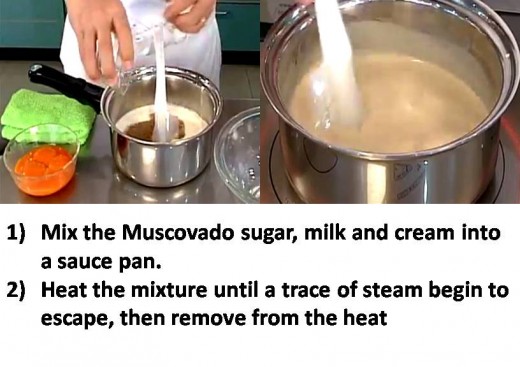
Making the Cream Brulee mixture | Source
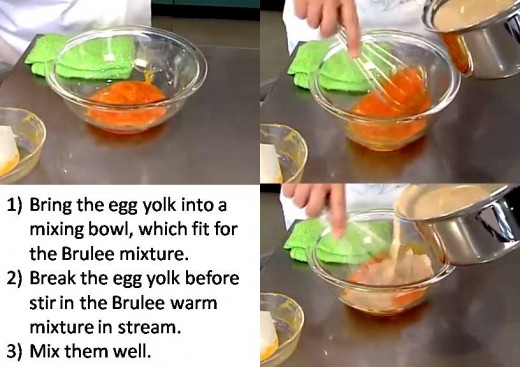
Stir the mixture into the egg yolk
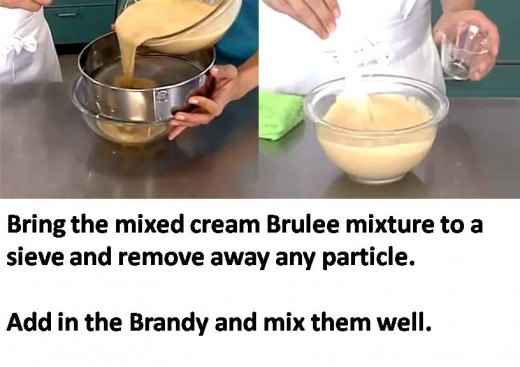
Sieve the content
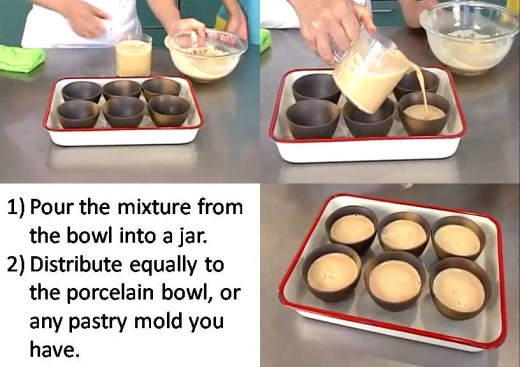
Distribute the liquid.
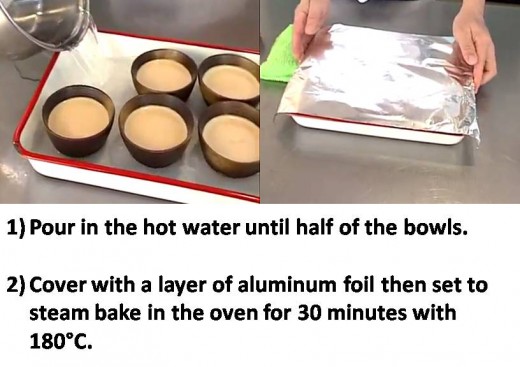
Preparation for the steam bake.
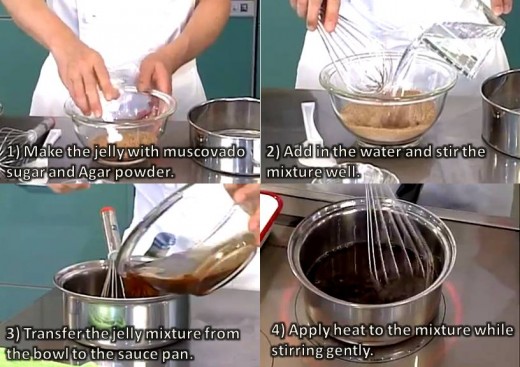
Making the Jelly
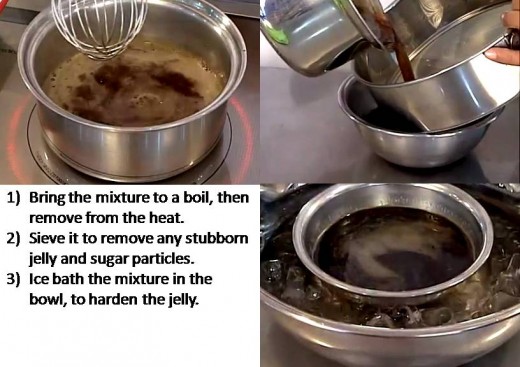
Sieve and ice bath the jelly liquid.
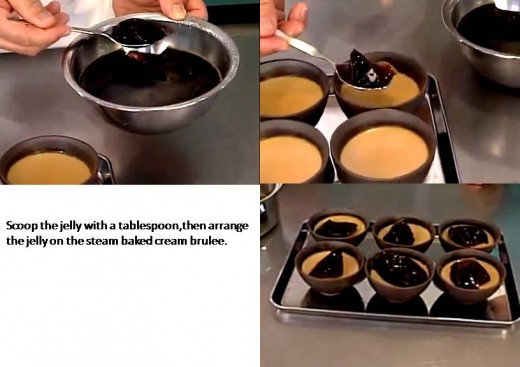
Scoop the jelly.
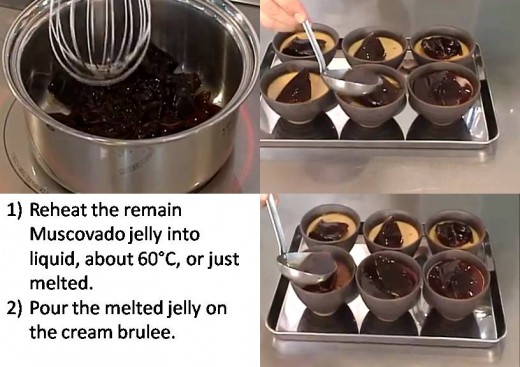
Melt the remaining jelly back into a liquid again.
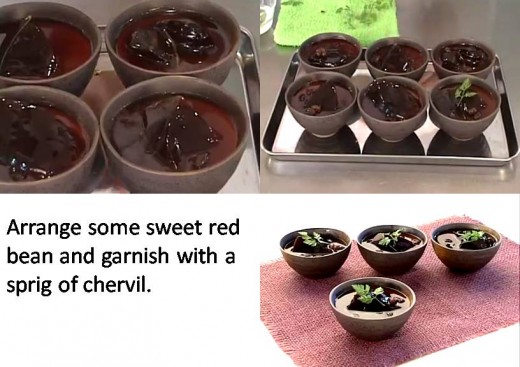
Garnish with sweet red bean and the chervil
Subscribe to:
Posts (Atom)








